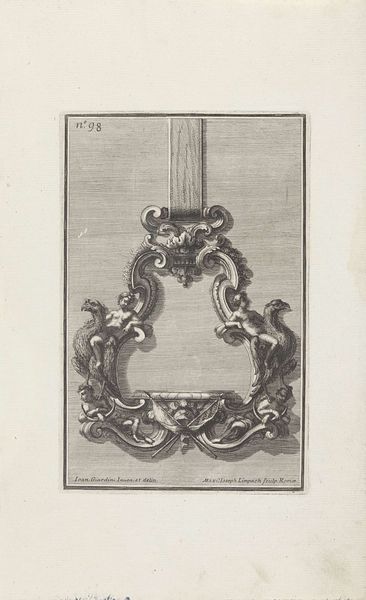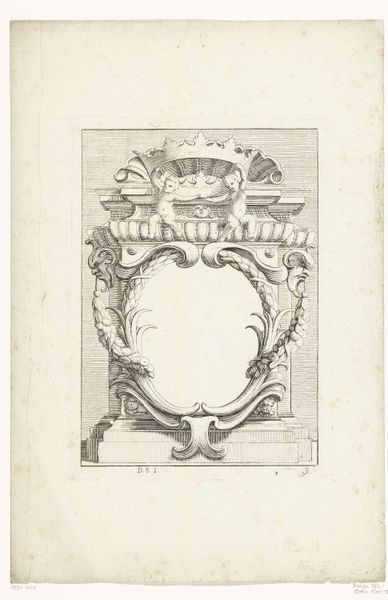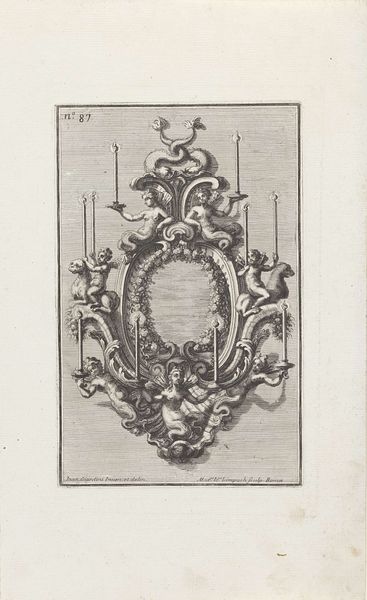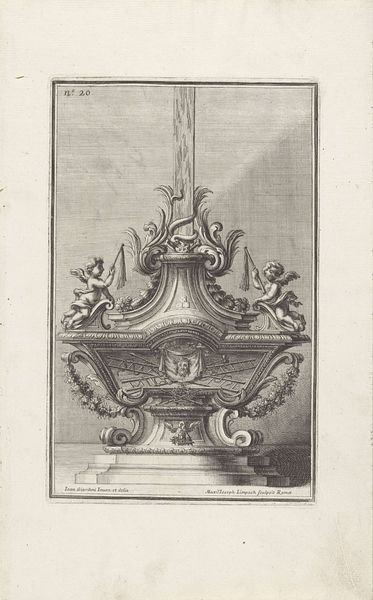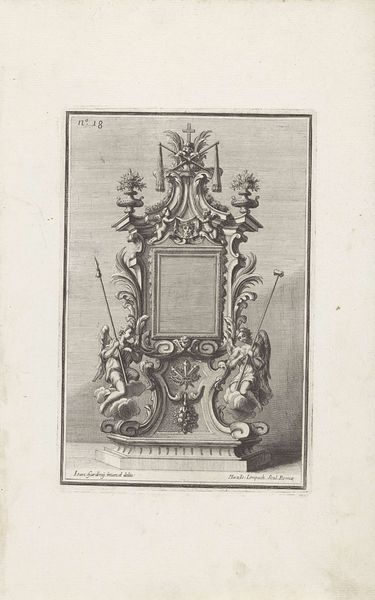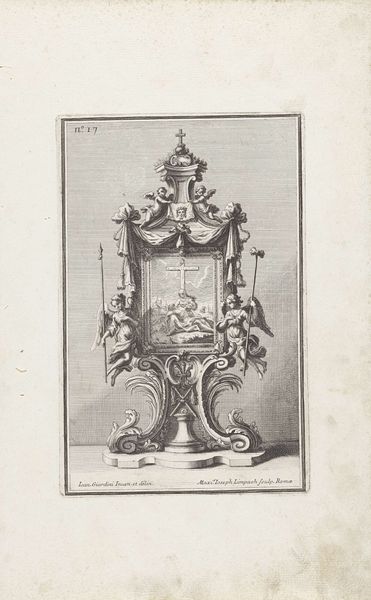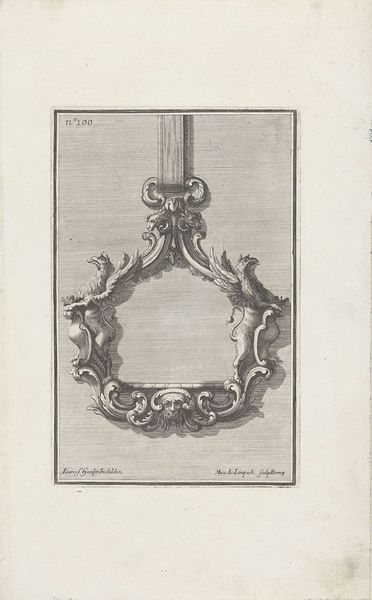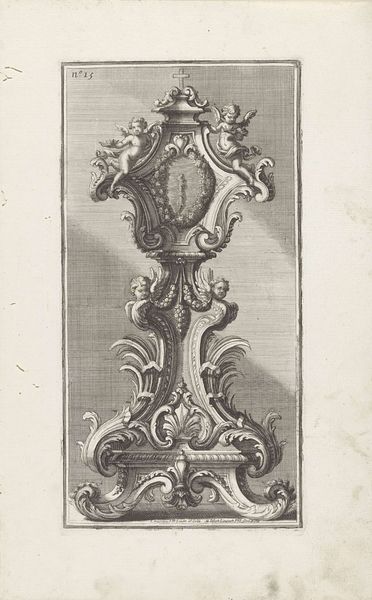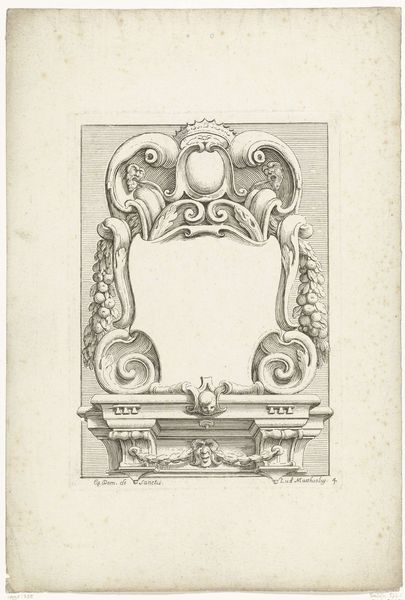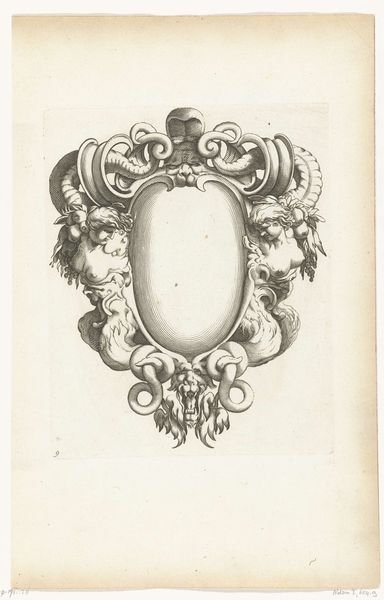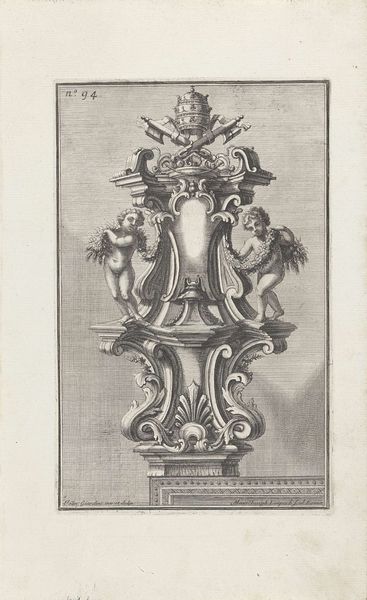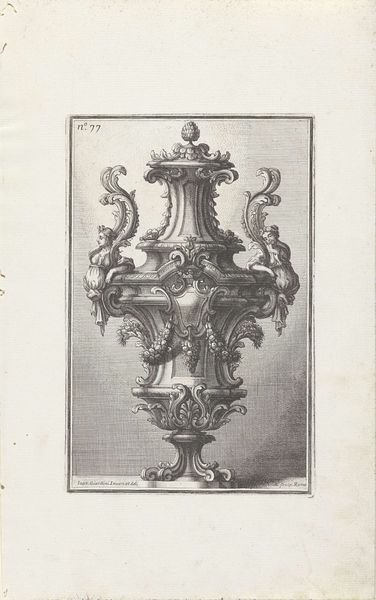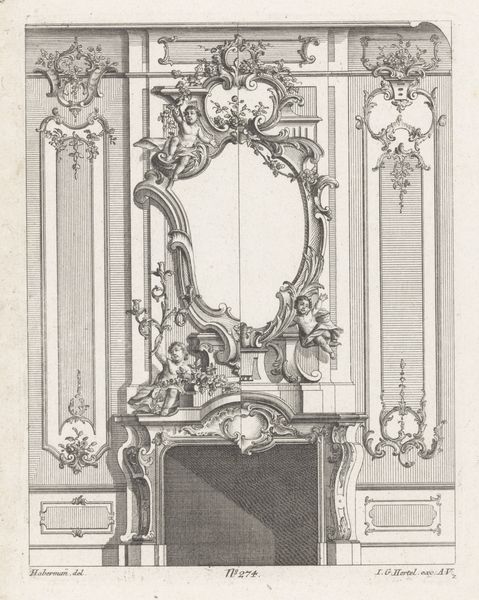
ornament, print, engraving
#
ornament
#
baroque
# print
#
figuration
#
decorative-art
#
engraving
Dimensions: height 240 mm, width 155 mm
Copyright: Rijks Museum: Open Domain
Editor: This engraving from 1714, "Ornament met saters en leeuwen" by Maximilian Joseph Limpach, depicts a baroque design featuring satyrs and lions. I'm really struck by the contrast between the delicate lines and the somewhat imposing subject matter. How would you interpret this piece? Curator: Well, viewing this ornament through a materialist lens, it prompts us to consider the engraving process itself, and its social function. Engravings like these were essentially mass-produced images. Think about the labour involved in creating the original design and then reproducing it multiple times. Editor: So, it's not just about the image itself, but also how it was made and circulated? Curator: Exactly! And who was consuming these prints? Were they aimed at the wealthy elite for their homes, or perhaps artisans using them as templates? The decorative details—the satyrs, the lions—what did they signify within the context of 18th-century Dutch society and their relationship to material culture and its display? How does its form reflect an understanding of social and economic contexts of that time? Editor: That's fascinating. It makes me consider the value we place on art now, and how different it might have been perceived back then. Something decorative today might have served a more specific social or economic purpose in the past. Curator: Precisely. We should be questioning traditional boundaries between what is considered "high art" and "craft", because it really blurs the line. Look at the level of skill and artistry that went into creating this, with a practical purpose in mind. It also demonstrates access to materials – who had it, who controlled it? Editor: I've never thought about ornamental prints this way. Thanks, I see now that considering materials, production and consumption makes a lot of sense here! Curator: My pleasure. It shows how a materialist approach makes the work less about "art" and more about historical forces at play.
Comments
No comments
Be the first to comment and join the conversation on the ultimate creative platform.
